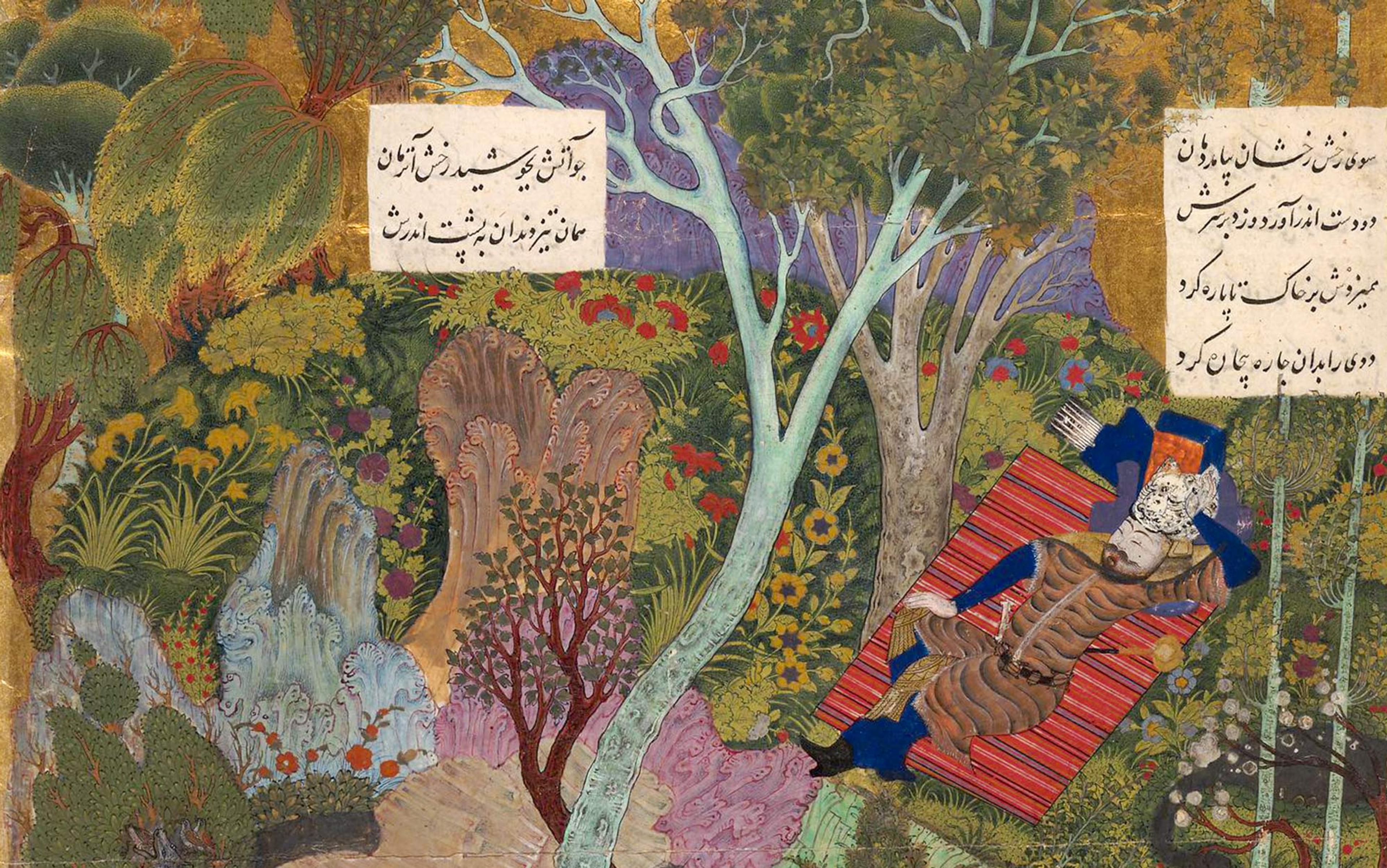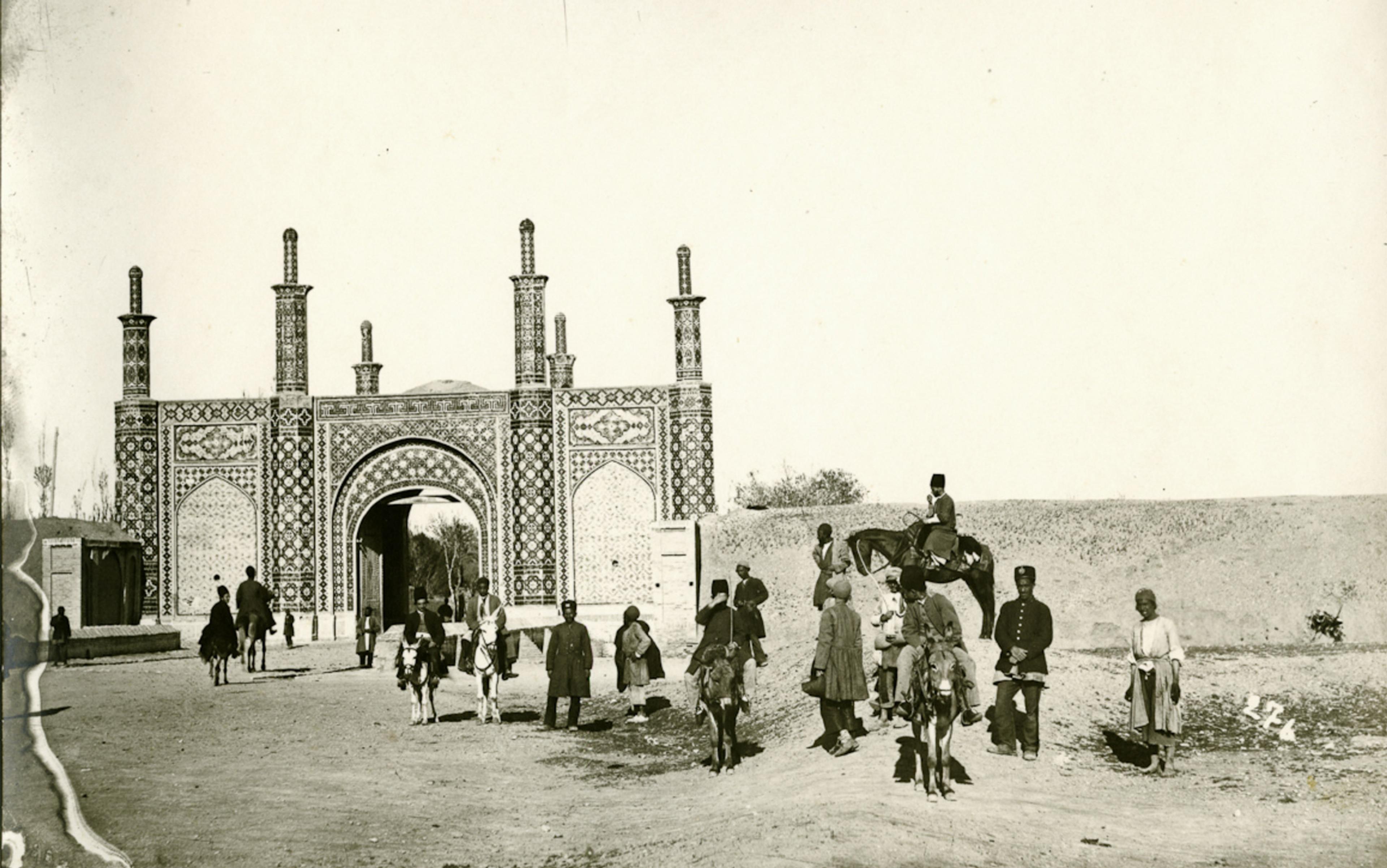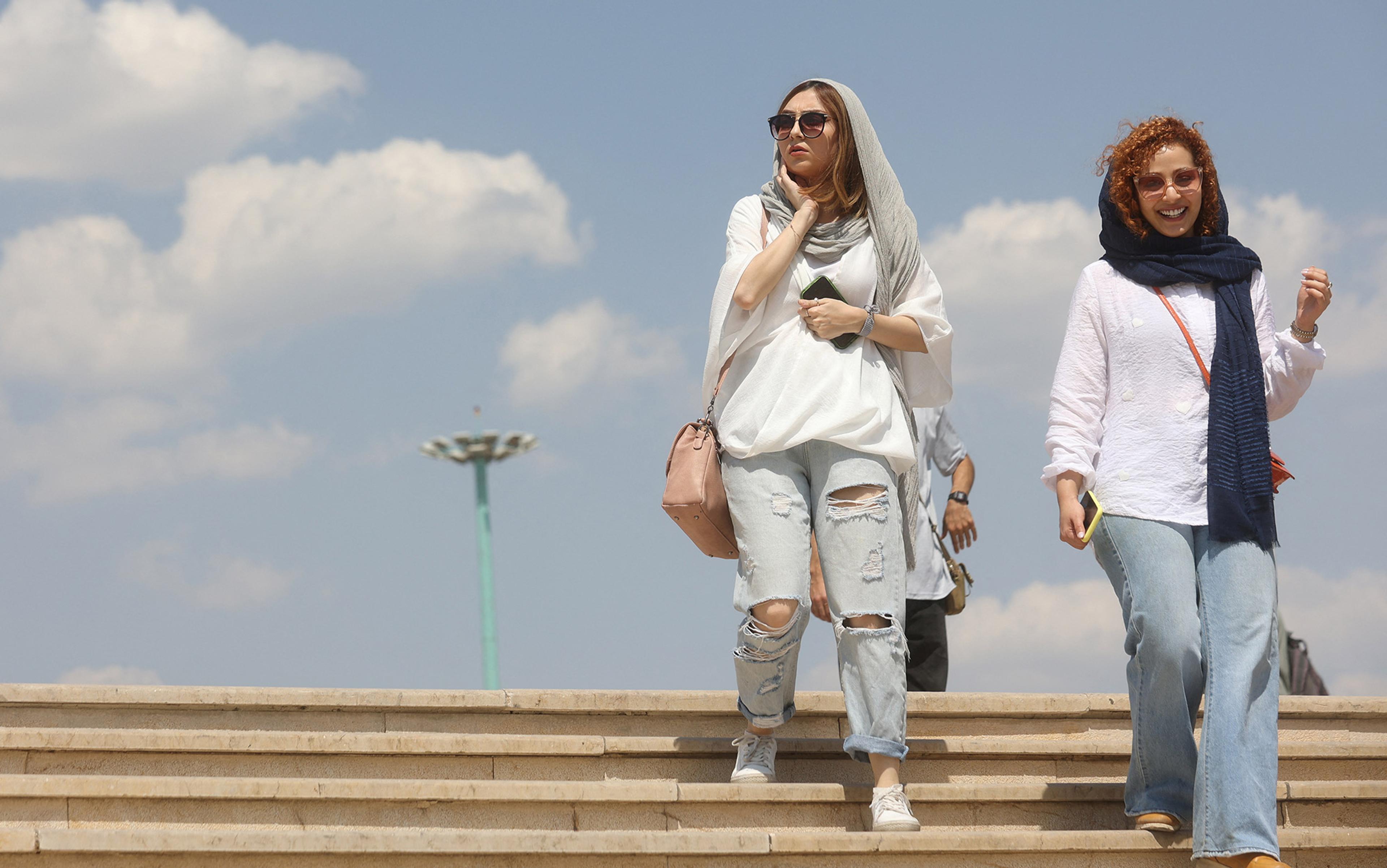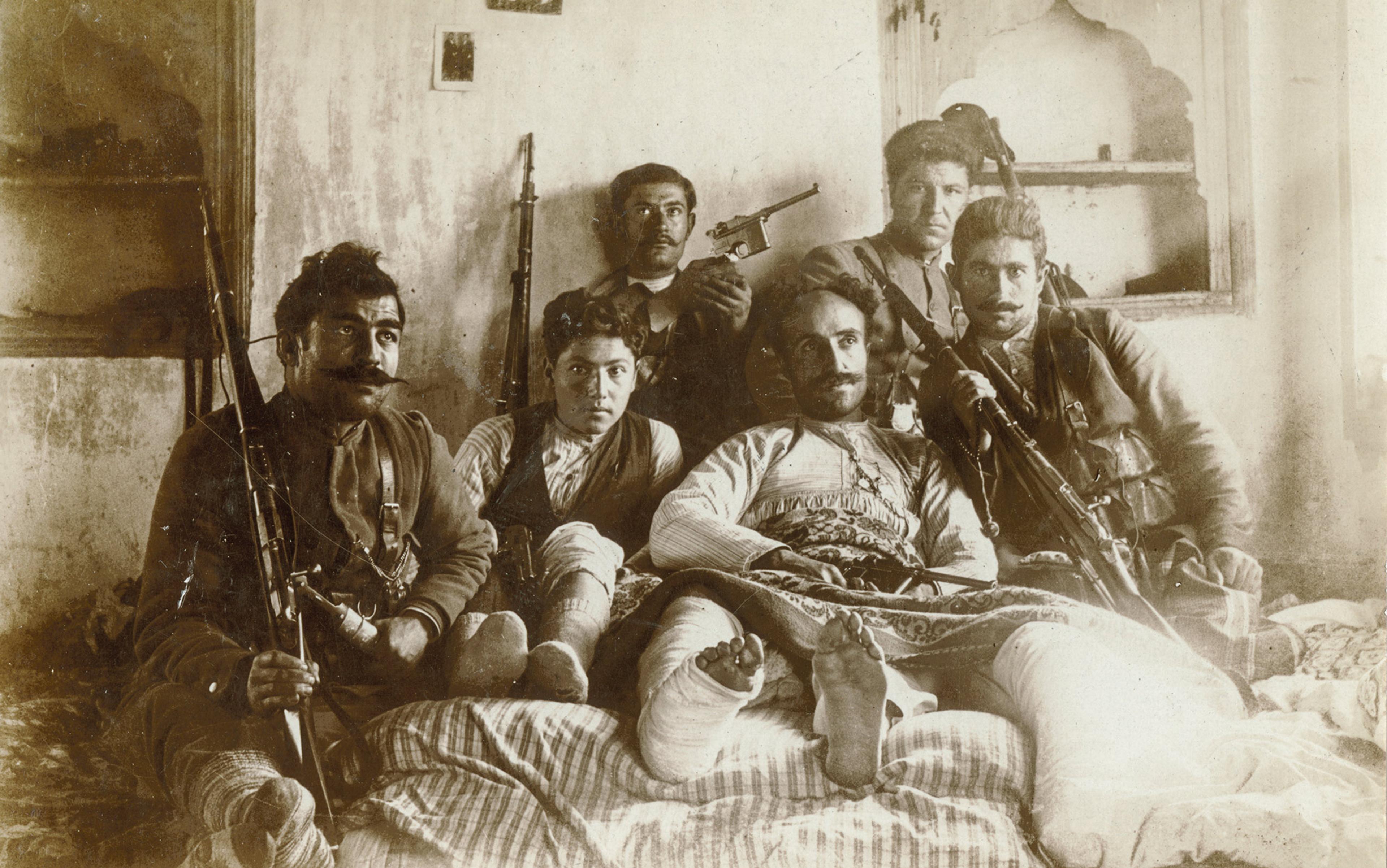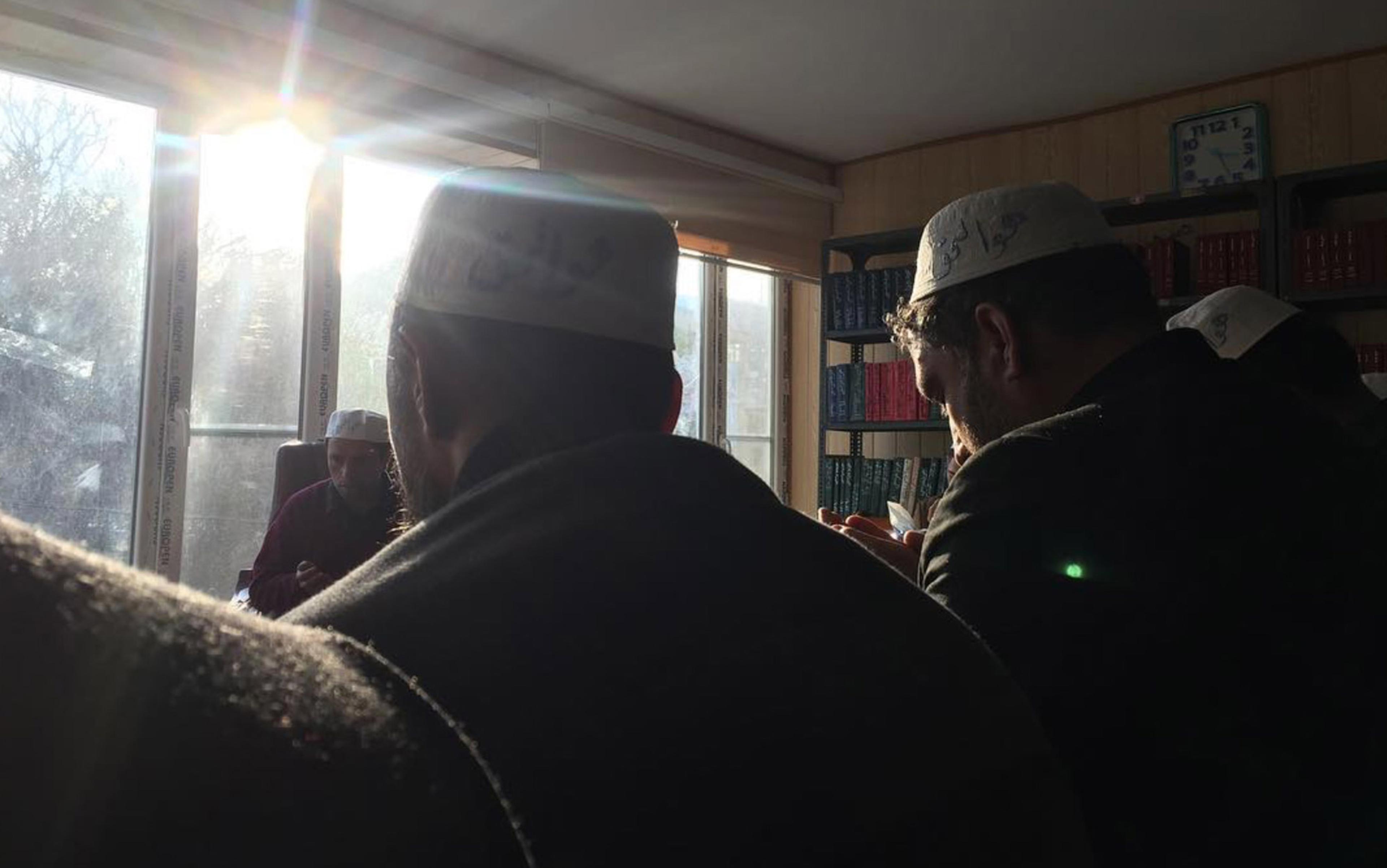At the end of the 19th century, under the looming shadow of European colonial encroachment, political and intellectual elites in Iran began to draw on nationalist forms of belonging as a way to unify the various ethnic and religious groups that lived within its territory. The nation was gaining ground at this time as the acceptable and legible idiom of collective political demands. As in most of Africa and Asia, nationalism was anticolonial, understood as a liberatory basis of solidarity to gain independence (or protect) from European colonial rule. Among its distinctive features is a conflation between land, a national(ised) language, and a people. But nationalism also sought to produce cultural homogeneity, and so fostered ugly forms of subordination and violence against peoples who, amid new ideals of the nation, suddenly became linguistic and religious minorities. In the case of Iran, nationalists seized upon the Persian language as a crucial basis of national identity, one that could be shared across religious and sectarian lines. But at the turn of the 20th century, fewer than half of the population of Iran spoke Persian as a first language (or at all).
Bound up in the spread of nationalism was not just repression of ethnic minorities (linguistic, as with Azeris, but also tied to other affiliations, as with the Sunni Kurds) and the repurposing of language as a basis of this necessary homogeneity, but a whole transformation of how it was possible to know oneself, one’s collective, and one’s relationship to other selves and collectives through the modern conceptual systems that came with a nationalist frame. In order for Iran to repurpose Persian as the national language of its people, it had to efface a number of significant aspects of its history and traditions shared with other countries. In the process, what it meant to be Persian changed profoundly.
Before modern nationalism, which led to today’s Iran (before 1934, the country was called Persia in European languages), Persians had an entirely different relation to land, origin and belonging. Prenationalist Persians (possessors of the Persian language) belonged to many lands, religions, kingdoms, regions, in what is now Iran and far beyond it. This earlier form of belonging allowed for a kind of pluralism, one in which Persians spoke other languages, observed different religions, and were part of various states or empires. Indeed, they accepted and even celebrated such overlapping multiplicity in language, religious affiliation and regional identification, which in more recent times has been the basis of so much conflict.
Previously, Persian had been a transregional lingua franca that co-existed with other languages across a shifting constellation of multilingual and multiconfessional empires and regional polities that characterised the eastern Islamic world. This older Persian signified no specific place or ethnicity. New Persian, the language’s technical term, grew out of the interaction of the Arabic language with Middle Persian, following the Arab Islamic conquests of the Sassanian Empire in the 7th century.
In the 10th century, regional sultanates at the periphery of the Abbasid Empire (in today’s Iran and Central Asia) adopted Persian as a court language. The Mongol Ikhanids, who supplanted the Abbasids in modern-day Iran and Iraq, promoted Persian as a language of universal rule and cosmopolitan empire through a common set of texts, practices and ideas. The cultural impact was long-lasting. From the 14th to the early 19th century, Persian was the language of power, culture and learning across Central, South and West Asia, used for government, philosophy, Sufi literature, historical commemoration, storytelling, poetry and ethical literature. It was used by Muslims and non-Muslims alike.
A constant circulation of people and knowledge sustained this shared culture, a set of sensibilities most easily understood through its adab, or its proper aesthetic and ethical forms. Learned not born, being Persian marked someone who had received a particular basic education that imparted Persianate sensibilities, through which they understood and engaged with the world. Adab was the proper form by which something had meaning in the world, though what was proper to one context was relational and could be inappropriate to another. Adab was central to the ontological being of any substance, whether as morals or meaning more generally. Its forms shaped practices of governance, social ethics and economic exchange.
In spite of the disintegration and fragmentation of empires in Iran and India during the 18th century, Persianate culture (the language and its forms, which spread into other adjacent languages, such as Urdu or Turkish) was most widespread. It was also a time when notions of belonging centring on shared Persian adab helped sustain societies in the absence of stable political rule, and were used by local elites to buttress new political claims. Not all societies understood themselves the same, but they used the same terms in which to articulate their political claims, which could disagree or contest each other’s interpretations.
To understand what markers of belonging, such as place and origin, meant for these Persians, we must start with adab’s aporetic logic. Aporetic distinctions are interpermeable, which in the case of Persian allowed for overlapping understandings of self and collectives, rather than the mutually exclusive distinctions that structure modern empirical truth. Although empiricism was one basis of understanding place and origin, other modes of defining place were as important. These included features that signified ethically and aesthetically, such as monumental architecture or virtuous friendships, other geographical schema such as the climate system, and stories associated with place that ranged the gamut from realistic to fantastical (though not understood in these stark terms). Since empirical proximity and connections were not the definitive factor in creating familiarity with a place, distance and difference did not necessarily create incoherence and alterity.
Persians understood the meaning of places relationally, and different meanings were invoked according to context. There were several levels of place, from homelands to larger regions (Iran was one such name), in between which lay smaller regions and political kingdoms. The most common geographical unit of place was the smaller region (Kashmir or Mazandaran), or its main urban centres. By contrast, homelands were small places, usually cities or towns. Homelands could also be multiple, accrued by forebears and in the course of life. The same placename could mean different things, based on relational context. Hindustan (today, ‘India’ in Persian) could refer to a number of scales of region: the whole subcontinent, the kingdom ruled by the Timurids (which did not include the southernmost reaches of the subcontinent) or else the smaller region of Hindustan (the central Indo-Gangetic plain of north India). When speaking of relations between rulers, the kingdom was invoked. When speaking of transregional movement, larger placenames, such as Turan (roughly, today’s Central Asia), were used.
Use of placenames also depended on a speaker’s location and audience. No Persian coming from Safavid-ruled Iran identified himself as ‘from Iran’ unless he had left that region and, crucially, spoke as part of a discussion about larger regions or polities. The Safavid kingdom was more often referenced by the names of its two largest provinces, ‘Iraq (Persian Iraq, today’s west central Iran) and Khurasan (in today’s eastern Iran and Afghanistan). Similarly, a Persian in Hindustan could speak of a homeland as Aurangabad (a city in the central Deccan region). If he described movement between smaller regions, he spoke of travel to Hindustan from Lahore, which was understood to be a city outside the smaller region of Hindustan. These forms of expression were learned and shared across Persianate Asia, providing a powerful basis for mutual comprehension across regions and political boundaries.
Transregionally circulating descriptions and stories created meanings of place based on associations that produced a morally imbued sense of familiarity and proximity often more significant than empirical geographical contiguity. Descriptions of environment, ethical social relations and practices of kingship that denoted just rule were among the features that made places recognisable in Persianate terms. Widely known mythical and historical narratives also endowed places with significance.
It articulates a way of relating based on geographical and political homology, rather than homogeneity
In the early 17th century, after the Timurids conquered the smaller region of Kashmir and incorporated it into their north Indian-based empire, they represented it as paradisiacal. With its lush greenery and temperate climate, further adorned by gardens and pavilions, Kashmir became a synecdoche for the whole of the empire. This characterisation, as the exemplar of paradise on Earth, became a defining feature of Kashmir broadly, as part of universal Persianate knowledge, whether one had been to Kashmir, or affiliated with the Timurid Empire or not. The specificity of Kashmir’s paradise-like qualities did not preclude the same in other places. It was part of a broader universal idiom of Persianate imperial power that marked certain places similarly, through homology.
In the mid-18th century, when ‘Abd al-Karīm, a minor Timurid functionary based in Delhi but born in Kashmir, wrote about his travels through Iran, he used this universally known feature of Kashmir to create connections with Mazandaran, a smaller region on the southern rim of the Caspian Sea. The kind of parallel he draws between Kashmir and Mazandaran allows a view into the kinds of affiliations possible in a world of competing imperial polities where aporia allowed for multiplicity and connection in self-definition.
He begins his account describing Mazandaran’s inaccessibility, due to its dense forests. Inclined to spend summers in the region, the Safavid Shah Abbas (who reigned 1588-1629) built roads through the forest and inns along them, ‘so that it would not be necessary for a tent, because of the fact that rainfall becomes quite heavy there, as is the case in Bengal.’ This is local knowledge made familiar to ‘Abd al-Karīm’s implied Hindustani Persian audience – the previous state of the passage through Mazandaran, the changes wrought by the previous Safavid rulers, and information about the climate, which he likens for his audience to Bengal, where many of his immediate readers in Delhi would not have been to either but would know as a place of heavy rainfall.
He also uses the script according to which the Timurids related to Kashmir to explain the Safavid relationship to their own paradisiacal land. ‘Abd al-Karīm marks Mazandaran’s similitude with Kashmir by noting that, just as the Timurid emperors Jahangir and Shahjahan would often go with their entourages to Kashmir, likewise the Safavid Shah Abbas I would go to Mazandaran ‘with some of his intimates and attendants for feasting and enjoyment’. The two places are framed not just by their similar natural beauty, but also because they both act as a paradise-like destination for the contemporaneous kings of two Persianate dynasties who held them in special regard as places to pass summers. That a Timurid functionary could recognise and articulate this kind of imperial place-making among Safavids speaks to transregionally legible and shared political practices.
‘Abd al-Karīm’s view of similitude extends to Mazandaran’s people; he claims that ‘the people of Iran tell strange tales with regard to the inhabitants of Mazandaran … about their simple-ness.’ These tales ‘in truth have no basis’. Regardless, ‘in Hindustan they call Kashmir “heavenly” and in Iran they call Mazandaran “paradise-like” and, because of these paradise-like-nesses, the people of both domains [Iran and Hindustan] subject the poor Kashmiris and Mazandaranis to much abuse.’ Kashmir and Mazandaran are not the same, but their domains are synonymous with the paradise of heaven. Accordingly, the relationships of their inhabitants vis-à-vis the rest of their respective empires and their domains’ significance for its imperial rulers is also homologous.
Such sympathies are remarkable given that ‘Abd al-Karīm’s travels are on the heels of the Iranian ruler, Nadir Shah Afshar’s humiliating invasion of Timurid India. Even more so are the parallels he draws between his Kashmiri homeland and the envied and abused people of Mazandaran. It articulates a way of relating based on geographical and political homology, rather than homogeneity. Homology and similitude also allowed for multiple affiliations, some of which might seem mutually exclusive of each other now. ‘Abd al-Karīm speaks as a universal Persian, also simultaneously a Hindi speaker, a Timurid imperial servant, and a local Kashmiri empathising with Mazandaranis’ plight in Iran. This multiplicity made it so that being Persian did not just mean being from a place called Persia (or, Iran).
If being Persian was not about origin in a particular place, neither was it about ‘ethnicity’. Origin was important, though it was differently comprised from our own, which is largely articulated through the Christian-specific idiom of blood, now universalised as modern. For premodern Persians, origin was part of a broader understanding of a person’s moral substance and ethical embodiment. A set of lineages comprised origin, establishing affiliations beyond those inherited with birth that seem illusory to us (not ‘real’ kinship), but were quite meaningful for Persians and significantly constitutive of understandings of self, family and broader social collectives. They included natal lineages, but also those of learning, service, aesthetics, occupation and devotion, which articulated the basis of possible affiliations (or their lack) to social collectives. These genealogies laid the basis for kinships that brought people together in ways that modern parochial categories of family, nation, ethnicity, gender and even religion do not accurately explain. Place was almost always part of origin, inflecting its more significant lineages, but did not give meaning to origin alone. There were many ways to be Persian, and one need not be Muslim or born in an Iranian city to be a master of its adab and all that it implied morally, though one had to be able to inhabit its forms.
One important factor constituting what proper form looked like was occupational position, articulated through lineages of birth, learning and service. If one was a scribe, one had to behave in a certain way to certain kinds of people to show oneself as ethical. In 18th-century India, for instance, a Persian could declare himself as from more than one place, a devoted student/disciple of a learned Sufi scholar (along with other Muslim students), a scribe in Hyderabadi state administration, and from a Hindu natal lineage defined primarily through its mastery of Persianate adab.
In his biographical compendium of Muslim and Hindu Persian poets, Gul-i Ra’nā (1768), ‘Lachmī Nara’in’ describes himself as ‘pennamed Shafīq, Aurangābādī, who, from the beginning of eternity, has his excellency Āzād Bilgrāmī’s brand of servitude on his forehead.’ He introduces his various names before distinguishing himself as literally marked by his teacher. Shafiq’s relationship with his teacher, Sayyid Ghulam ‘Ali Azad Bilgrami, is a lineage of knowledge, part of his origin.
Place was almost always bound up in other kinds of lineages and almost never singularly given
Later, in his autobiography, before any mention of his own birth, he narrates his origins as ‘the Kathrī Kapūr people’ in Lahore. Shafiq recounts how his grandfather, Bhavānī Dās, accompanied the Timurid emperor ‘Ālamgīr (who reigned 1658-1707) to the Deccan, entering into his service as a scribe. Shafiq’s father, Rā’ī Mansā Rām, was also trained in the scribal arts, by his father and maternal grandfather. (His scribal occupation and its lineage are as important as his Hindu-specific natal one.) From the time Nizam al-Mulk Asaf Jah ruled Hyderabad as a regional state (1724-48) in a rapidly decentralising Timurid Empire, Mansā Rām became the deputy administrator of all six districts of the Deccan, a position he held for more than 40 years. This position was enhanced when he gained further rank in the Hyderabadi administration (under Navvab Samsām al-Dawlah), through the recommendation of Āzād Bilgrāmī, later Shafiq’s own teacher and mentor. He concludes this description of his father by noting that ‘he incorporated service to the dervishes with service to the nobles’. And that ‘he always observed the manner of conferring the kindness of favours, and my father accomplished both forms of dignified service according to all the necessary customs (ā’īn).’
Shafiq’s origins are in terms of what we would call caste (not a term he uses) and paternal ancestry, alongside and intertwined with lineages of teachers and patrons. His origins and their names, Khatri Kapuri (and its sub-designation, Mathur), Lahori and Awrangabadi, imperial and paternal, come together to make him a Hindu, a Timurid administrator, and a Persian man of letters. Prominent in this story is his father’s mastery of the adab (as ethics) appropriate to his social location in imperial administrative service, a product of many other relationships. Rā’ī Mansā Rām’s perfect enactment of the expected customs of conduct toward all kinds of people – from the masters of the unseen world (dervishes) to those of this manifest world (nobles) – indicate the wholistic basis of Shafiq’s own learned potential as a master of adab. Shafiq’s account of his origins is typical in its primary emphasis on genealogies and in the specifics of his occupation. Amid these origins, place appears but does not determinatively constitute origin. Rather, place was almost always bound up in other kinds of lineages and almost never singularly given.
As my example shows, Persianate adab allowed non-Muslims who could master its forms to register as ethical selves. This was a self that emerged through affiliations and identifications with social collectives, based on a variety of lineages, some of which were based on commonalities recognisable to us (religion, region, parentage) and others that simultaneously united across divisions in terms archaically unfamiliar (discipleship, learning, service, occupation and aesthetics). Being Muslim was recommended, but ultimately optional, whereas possession of adab (however partial) was not.
Relations we now recognise as biological were important, but they were incorporated into broader lineages that challenge current analytic uses of ethnicity or nationality as the definitive or even relevant means by which people understood themselves. Lineages formed connective chains that could be overlaid and combined. Persianate belonging was thus multiple, based on a kinship that linked places, learning, family, service and social collectives. Across both political and parochial lines, these supple lineages were central to the constitution of selves, and of their relations to one another and their collectives. Moreover, the aporia that structured adab allowed for multiplicity of affiliation, plurality of sometimes overlapping identifications.
Colonial modernity and its nationalist responses did not completely change the terrain of place and origin. New logics organised belonging, but old meanings and their multiple possibilities remained. In 2008, an old man who welcomed me in the Yazd bazaar called Yazd a mamlakat, a relational use of the word for a region or domain. I had come from Tehran and, in his usage, Tehran and Yazd were both regions in their own right, as part of the larger domain (mamlakat) of Iran. I wondered how the aporetic ease with which the two levels of mamlakat existed might serve as a foundation for a sense of belonging that could accommodate differences such as regional affiliations in ways non-threatening to the Iranian state (or, most pressingly, to states in the subcontinent). Perhaps the continued existence of aporetic Persianate forms is a hopeful perspective from which we might see possible futures anew.
